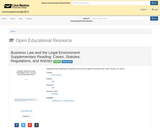
Supplementary Readings for Business Law and the Legal Environment (Ed. Keith Tierney, rev. 2019).
- Subject:
- Law
- Material Type:
- Textbook
- Provider:
- Linn-Benton Community College
- Author:
- Keith Tierney
- Date Added:
- 07/09/2020

Supplementary Readings for Business Law and the Legal Environment (Ed. Keith Tierney, rev. 2019).
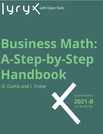
This textbook was written to meet the needs of a twenty-first century student. It takes a systematic approach to helping students learn how to think and centers on a structured process termed the PUPP Model (Plan, Understand, Perform, and Present). This process is found throughout the text and in every guided example to help students develop a step-by-step problem-solving approach.
This textbook simplifies and integrates annuity types and variable calculations, utilizes relevant algebraic symbols, and is integrated with the Texas Instruments BAII+ calculator. It also contains structured exercises, annotated and detailed formulas, and relevant personal and professional applications in discussion, guided examples, case studies, and even homework questions.
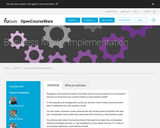
Designing a new business model is one thing, but how do you actually put it into practice? How do you move from your current model to a new business model?
In this business and management course, you will learn how to make a practical action plan to implement your new business model.
You will create a business model roadmap that will include practical activities that take into consideration the possible risks associated with moving to a new business model.
You will also learn about the practical factors that need to be taken into consideration during the transition process, i.e. the competency of your people and your IT, in order to successfully implement a new business model.
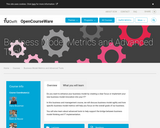
Do you want to enhance your business model by creating a clear focus or implement your new business model innovation into your IT?
In this business and management course, we will discuss business model agility and how specific business model metrics will help you focus on the overall goals of our business.
You will also learn about advanced tools to help support the bridge between business model thinking and IT implementation.
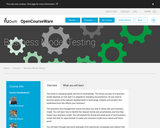
The world is changing rapidly and full of uncertainties. The future success of a business model depends on how well it is adapted to changing circumstances. Do you want to become aware of the relevant developments in technology, markets and society? And understand how this affects your business?
This business and management course will teach you how to stress test your business model. You will learn how to identify the relevant trends and uncertainties and how they impact your business model. You will analyse the strong and weak parts of your business model and look for opportunities to make your business model more robust and future proof.
You will learn through real-world examples from well-known companies and interact with fellow entrepreneurs. By the end of this course, you will be able to stress test your own business model to analyse its future success.
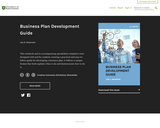
This textbook and its accompanying spreadsheet templates were designed with and for students wanting a practical and easy-to-follow guide for developing a business plan. It follows a unique format that both explains what to do and demonstrates how to do it.
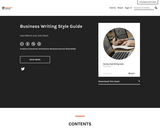
Short Description:
In light of the cost of textbooks and education in general, we undertook this project to create a free resource to be used broadly by students in a business context. We wanted to provide comprehensive coverage of the writing process, but keep our topics relevant to business education. We hope that this textbook provides equal value to both non- and native-English learners alike. Just like we acknowledge that students will continue to develop their writing skills, we expect this project to challenge and further our own skills as writers. Data dashboard
Word Count: 28533
(Note: This resource's metadata has been created automatically by reformatting and/or combining the information that the author initially provided as part of a bulk import process.)
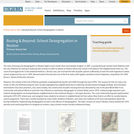
This collection uses primary sources to explore school desegregation in Boston. Digital Public Library of America Primary Source Sets are designed to help students develop their critical thinking skills and draw diverse material from libraries, archives, and museums across the United States. Each set includes an overview, ten to fifteen primary sources, links to related resources, and a teaching guide. These sets were created and reviewed by the teachers on the DPLA's Education Advisory Committee.
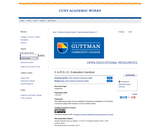
This guide is a helpful way of remembering the criteria you should consider when evaluating information: Currency, Authority, Relevance, Documentation, Information Type, and Objectivity. CARDIO.
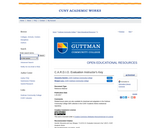
Related lesson plans are also available for download and adaptation in the Guttman Community College OER collection in the CUNY Academic Works institutional repository. This goes along with the C.A.R.D.I.O. Evaluation Handout.
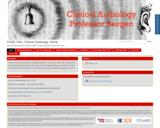
Evidence-based clinical aspects of audiologic identification, assessment, intervention, and prevention of hearing impairments relevant to the practice of speech-language pathology; strategies for working with individuals and their families across the lifespan; culturally and linguistically appropriate practice.
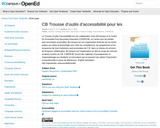
La Trousse d’outils d’accessibilité est une collaboration entre BCcampus et le Centre for Accessible Post-Secondary Education (CAPER-BC ou Centre pour les études post-secondaire accessible). BCcampus est une organisation financée par les fonds publics qui utilise la technologie pour relier les compétences, les programmes et les ressources de tous institutions post-secondaire de C.B. dans un réseau de services de livraisons collaborative. BCcampus est l’organisation en tête du projet de manuels scolaires ouverts en CB. CAPER-BC fournit des matériaux d’enseignement et d’apprentissage aux étudiants et instructeurs qui ne peuvent pas utiliser l’impression conventionnelle à cause de déficiences. English translation: http://opentextbc.ca/accessibilitytoolkit
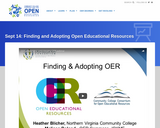
Faculty who are new to OER may experience difficulty finding an open textbook or other openly licensed materials to adopt for their courses. Searching on your own is time consuming and the choices can be overwhelming. We will hear from a college librarian who helps faculty find and adopt high quality OER to match their course outcomes and the creators of the award winning OER Commons, a freely accessible online library that allows teachers and others to search and discover open educational resources (OER) and other freely available instructional materials.
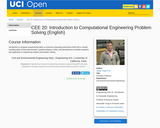
Introduction to computer programming within a numerical computing environment (MATLAB or similar) including types of data representation, graphical display of data, and development of modular programs with application to engineering analysis and problem solving.
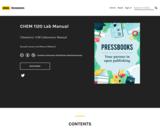
Chemistry 1120 Laboratory Manual
Word Count: 32979
(Note: This resource's metadata has been created automatically by reformatting and/or combining the information that the author initially provided as part of a bulk import process.)
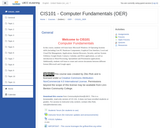
In this course, students will learn basic Microsoft Windows 10 Operating Systems skills (including Core PC Hardware Components, Graphical User Interface, Local and Cloud File Management, Applications, Internet Browsers, Security, and key System Utilities), Google Email, Contacts, Calendar, and Drive applications, as well as introduction to Word Processing, Spreadsheet and Presentation applications. Additionally, students will learn to create and convert documents between different format (Microsoft and Google apps).
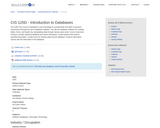
This course is designed to use technology as a productivity tool within a business environment through the use of database software. You will use database software for creating tables, forms, and reports by manipulating data through various query tools.
Course Outcomes:
1. Produce a simple relational database that stores information.
2. Create queries that retrieve specified information.
3. Create forms for entering data into the database.
4. Produce informative reports with the information in the database
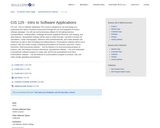
This course is designed to use technology as a productivity tool within a business environment through the use and integration of various software packages. You will use word processing software for formatting business correspondence, creating tables, multipage document, graphical elements, mail merging, and other features. Spreadsheet software will be used to create formulas, use built-in function for calculations, create charts/graphs, reference other worksheets/cells, and create absolute cell references as well as other formatting and editing features. Presentations software will be use to produce, edit, and create visually compelling presentations for business outcomes.
Course Outcomes:
1. Word processing software -- Use the features of a word processing program to produce, edit, and enhance business documents.
2. Spreadsheet software -- Use and understand a spreadsheet software program to create, edit, and format spreadsheets and charts.
3. Presentations software -- Use the features of a presentations program to produce, edit, and make visually appealing presentations.
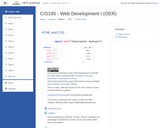
For access to instructor-only resources, contact LBCC's OER librarian (willihm@linnbenton.edu).|Introduces web design through an examination of (X)HTML, CSS and relevant computer graphic file formats. Students will learn to create standards-compliant, accessible web pages using modern design techniques and technologies. Emphasis will be placed on learning to write (X)HTML and CSS script without the help of advanced web design software; writing accessible, standards compliant code; and separating content, presentation and action.
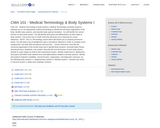
Medical Terminology and Body Systems I prepares you to use appropriate medical terminology to identify the structural organization of the body, identify body systems, and describe body special orientation. You will identify the normal function of each body system. You will identify word parts and abbreviations as they relate to body systems. This course has 4 Credit Units that will assist you in learning the course objectives.
NOTE: This is a Terminology course which will require you to properly pronounce words. You will need a set of headphones with a microphone attached in order to complete some assignments. Ear buds with microphone work just fine.
Course Outcomes:
1. Describe the structural organization of the human body and to identify Body Systems.
2. Describe Body Planes, Directional terms, quadrants, and cavities.
3. Describe the normal function of each body system, identify its major organs as well as their anatomical location.
4. Identify medical terms, labeling the word parts and define both medical terms and abbreviations related to all body systems.
5. Identify and analyze treatment modalities, normal function, organization, and diagnostic measures, for the following body systems: a. Integumentary System b. Skeletal System c. Muscles and Joints d. Nervous System e. Blood and Lymphatic Systems